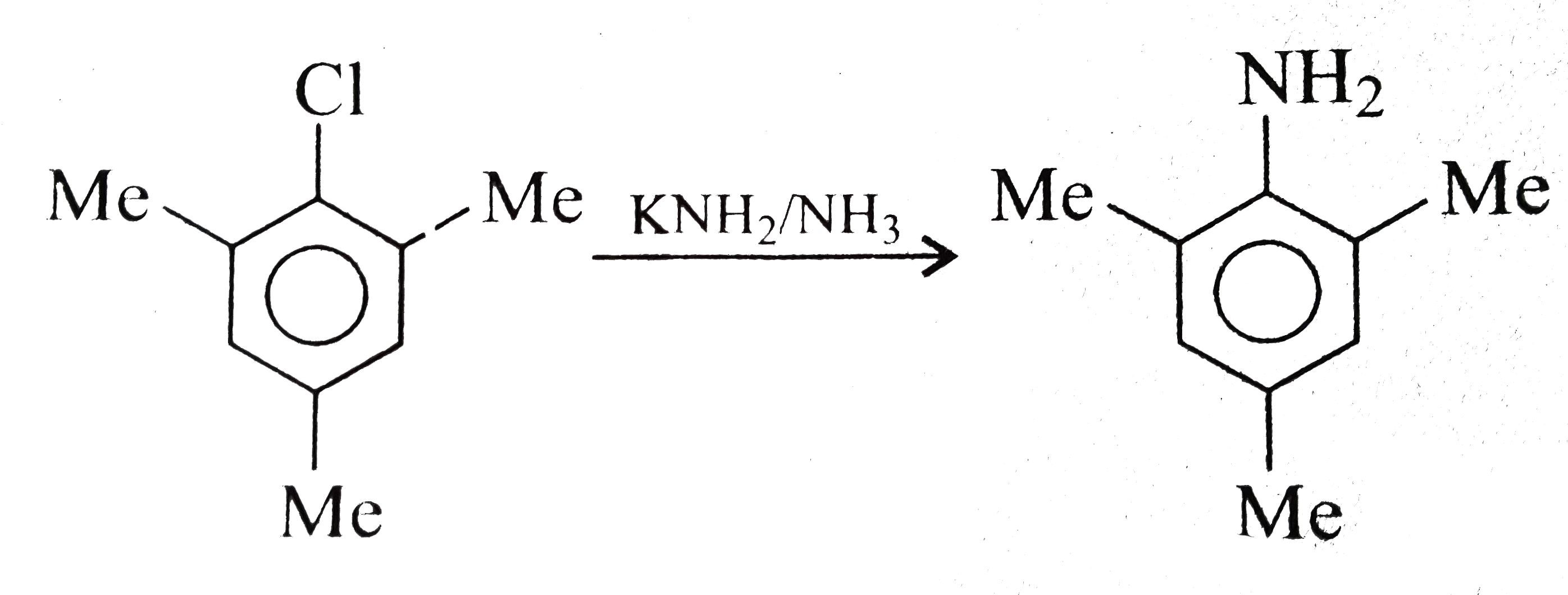Which of the following reactions is/are feasible?
CH3CH2Br++NaO−−CH3| C | CH3−CH3→CH3CH2O−CH3| C | CH3−CH3
CH3−CH3| C | CH3−Cl+Na+O−CH2CH3→CH3CH2−O−CH3| C | CH3−CH3
Both a and b
None of the above
The correct Answer is:A
To determine the feasibility of the given reactions, we need to analyze each reaction based on the SN2 mechanism and the concept of steric hindrance.
1. Identify the Reactions:
- The first reaction involves CH3CH2Br (ethyl bromide) reacting with NaO-C(CH3)3 (tert-butoxide).
- The second reaction involves a tertiary alkyl halide.
2. Understand the SN2 Mechanism:
- In an SN2 reaction, a nucleophile attacks an electrophile (alkyl halide), leading to the displacement of a leaving group (halide ion).
- The reaction proceeds in a single step, and the rate depends on the concentration of both the nucleophile and the substrate.
3. Evaluate Steric Hindrance:
- First Reaction:
- The alkyl halide (ethyl bromide) is a primary halide, which means it has minimal steric hindrance.
- The nucleophile (tert-butoxide) can easily approach and attack the carbon atom, leading to the formation of the ether product.
- Therefore, this reaction is feasible.
- Second Reaction:
- The alkyl halide is tertiary, meaning it has three alkyl groups attached to the carbon atom.
- The steric hindrance is significant, making it difficult for the nucleophile to attack the carbon atom.
- Instead of an SN2 reaction, an elimination reaction occurs, leading to the formation of an alkene as the major product.
- Hence, this reaction is not feasible for the formation of an ether.
4. Conclusion:
- The first reaction is feasible, while the second reaction is not feasible for ether formation.
Final Answer:
- The correct answer is that only the first reaction (Option A) is feasible.
- The first reaction involves CH3CH2Br (ethyl bromide) reacting with NaO-C(CH3)3 (tert-butoxide).
- The second reaction involves a tertiary alkyl halide.
- In an SN2 reaction, a nucleophile attacks an electrophile (alkyl halide), leading to the displacement of a leaving group (halide ion).
- The reaction proceeds in a single step, and the rate depends on the concentration of both the nucleophile and the substrate.
- First Reaction:
- The alkyl halide (ethyl bromide) is a primary halide, which means it has minimal steric hindrance.
- The nucleophile (tert-butoxide) can easily approach and attack the carbon atom, leading to the formation of the ether product.
- Therefore, this reaction is feasible.
- Second Reaction:
- The alkyl halide is tertiary, meaning it has three alkyl groups attached to the carbon atom.
- The steric hindrance is significant, making it difficult for the nucleophile to attack the carbon atom.
- Instead of an SN2 reaction, an elimination reaction occurs, leading to the formation of an alkene as the major product.
- Hence, this reaction is not feasible for the formation of an ether.
- The first reaction is feasible, while the second reaction is not feasible for ether formation.
- The correct answer is that only the first reaction (Option A) is feasible.
Topper's Solved these Questions
- ALCOHOLS, PHENOLS AND ETHERSBOOK - MHTCET PREVIOUS YEAR PAPERS AND PRACTICE PAPERSCHAPTER - ALCOHOLS, PHENOLS AND ETHERSEXERCISE - PRACTICE EXERCISE (Exercise 1 (TOPICAL PROBLEMS))
119 Videos
- ALCOHOLS, PHENOLS AND ETHERSBOOK - MHTCET PREVIOUS YEAR PAPERS AND PRACTICE PAPERSCHAPTER - ALCOHOLS, PHENOLS AND ETHERSEXERCISE - PRACTICE EXERCISE (Exercise 2 (MISCELLANEOUS PROBLEMS))
103 Videos
- ALDEHYDES, KETONES AND CARBOXYLIC ACIDSBOOK - MHTCET PREVIOUS YEAR PAPERS AND PRACTICE PAPERSCHAPTER - ALDEHYDES, KETONES AND CARBOXYLIC ACIDSEXERCISE - MHT CET CORNER
21 Videos
Similar Questions
Knowledge Check
Which of the following reactions are ot feasible?
AHC≡CH+KOH→BHC≡CH+NaNH2→CHC≡CH+NaOH→DHC≡(−)CK(+)+(CH3)3C−Br→Which of the following reactions are feasible ?
A B
B C
C D
D
Which of the following reactions is not feasible?
A(CH3CH2)2CuLi+CH3CH2C(CH3)2Br→B[(CH3)3C]2CuLi+CH3CH2CH2Br→C[CH3CH2C(CH3)2]2CuLi+CH3CH2Br→D[(CH3)2CH]2CuLi+(CH3)2CHCH2Br→
Which of the following reactions are not feasible?
View SolutionWhich of the following reaction are not feasible?
View SolutionWhich of the following reactions are not feasible ?
View SolutionWhich of the following reactions is/are not feasible :
View SolutionWhich of the following reactions are feasible for hydrazine?
View Solution
